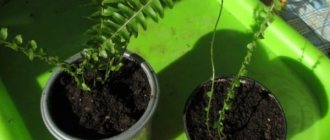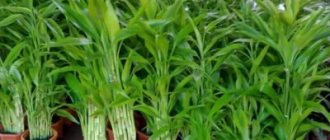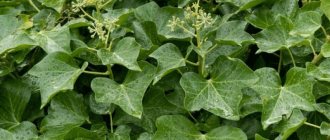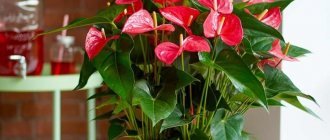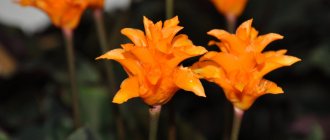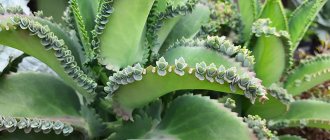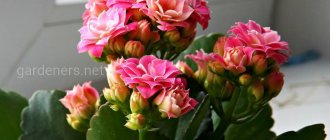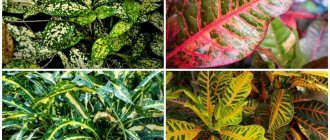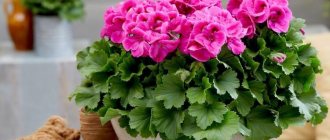Few flower growers know that there are types of coniferous plants that can be safely grown indoors. The most successful solution in this case is cypress. Although it is a winter-hardy plant, it feels great indoors all year round. In addition, it is much cheaper than its older brother cypress.
Features of the plant
Cypress trees resemble their fellow cypress trees in appearance. But if they are able to grow exclusively in the tropics and subtropics, the younger brothers will withstand any, even the most severe cold snap. These plants are widely used in the Northern Hemisphere.
Cypress trees can grow into fairly tall trees, so at home you should only grow young plants while they have soft needles. They will add 3-4 cm in height every year and will be able to stand in the room for a whole decade.
Young trees have soft and delicate needles, a pleasant bluish-gray color. As she grows older, she darkens. The bark is an attractive brown-red color, but due to the needles it is almost invisible.
By placing such an evergreen pet in your home, there will be no need to buy a Christmas tree.
Indoor format of garden cypress trees
Very similar in appearance to cypress trees, cypress trees are a frost-resistant alternative and the only replacement for subtropical and tropical cypress trees in countries with harsh winters. Despite the fact that low frost resistance for indoor cultivation is not an obstacle, more and more often it is not genuine cypress trees that appear on the shelves, but much more diverse, affordable and popular garden cypress trees.
Cypress trees are ancient representatives of the Cypress family. They are widespread throughout the northern hemisphere. Indoor culture traditionally features the same plants that are used in local landscape design.
Despite the fact that all cypress trees are quite large plants in nature, indoor cypress trees remain compact and medium-sized evergreen trees. Usually only young, immature cypress trees, whose needles are still soft, are grown.
Due to their slow growth (2-5 cm per year), cypress trees are left indoors for up to 10 years. One- to two-year-old seedlings obtained by cuttings and young seedlings that have begun to form a crown are preferred. The younger the plant, the better it will adapt to growing indoors.
The shoots of cypress trees are thin, densely branched, flexible, often curved at the ends, and become thicker and stronger over time. The brown-reddish bark is very beautiful, but under the needles it is almost invisible.
The needles of cypress trees, especially at a young age, pleasantly surprise with their softness. Delicate, pleasant to the touch, not at all hard, the densely arranged needle-shaped needles of young cypress trees also have a rich palette of shades. Even the simplest, non-varietal plants have bluish-blue needles.
Genuine “adult” flattened, scale-like needles on cypress trees appear after a few years, and on older plants the needles are even denser. With age, the colors intensify, the upper side of the needles darkens, and white spots can be seen on the lower side.
The needles of cypress trees, especially at a young age, pleasantly surprise with their softness. © crocus
Purifier, Christmas tree and potential garden decoration
Without exception, all indoor cypress trees can be considered as effective fungicides and the best plants for air purification. They not only fight toxins, but also suppress pathogenic microbes, actually disinfecting the air.
One of the most popular reasons for growing cypress trees as a houseplant is to replace the Christmas tree. Beautiful and neat, fragrant and elegant, cypress trees look great as an alternative to spruce trees. But since a warm winter is not for them, it is not worth bringing plants indoors for decoration and use for longer than 5-7 days.
Cypress trees that have lost their decorative effect, drying out, elongated, and overgrown can be planted in the garden and tried to be preserved, following the rules for garden species. For the first 2 years they should winter with an air-dry shelter.
Cypress or cypress tree?
Confusion when purchasing indoor conifers cannot be avoided. Even thujas with junipers are sometimes proposed to be grown like cypresses, to say nothing of the confusion between cypresses and cypress trees that are so similar not only in name.
Some plants are passed off as others, and for many, cypress or cypress are almost synonymous. But still, the type of conifer purchased is of considerable importance. After all, it determines changes in the crown with age, temperature, and even requirements for air humidity.
Cypress trees are generally less demanding than cypress trees, which, with small deviations from the ideal environment, can very easily lose their decorative effect and begin to dry out. So if you're looking for a more resilient, fast-growing, compact version, check out the Latin name by choosing cypress (Chamaecyparis) rather than cypress (Cupressus).
Usually you can guess the species by the price: cypress trees at a young age are much more accessible and more common, the cost of seedlings is lower due to the greater popularity of the plant and easier propagation.
Pea cypress (Chamaecyparis pisifera). © twogreenthumbs
Home care
Cypress trees are much easier to grow than cypress trees. But even here you will have to work hard to make the indoor tree look bright and healthy.
Location and lighting
To determine a place for a flowerpot with a cypress tree, you need to figure out what type of tree you purchased. Simple species can remain in the depths of the room for a long time. But varietals that have an original color are best installed as close to daylight as possible.
But both of them should be carefully protected from direct sunlight, even if this happens only in the morning or evening hours. Watch your pet's color. If the shade of the needles is muted, it means that you need to move the tub closer to the light, but only diffused.
In winter, try to move the flowerpot with cypress closer to the window, and in summer, push it deeper into the room. If the windows face north, then you can try placing a flowerpot with a bush even on the windowsill.
Also keep in mind that your pet needs regular ventilation, so place it close to the balcony doors. In the summer, the pot can be taken out to the loggia or to the open terrace. Just protect your coniferous friend from the rays of the sun, draft and rain.
Temperature
Cypress does not like heat. In the summer, it is advisable to provide it with a comfortable temperature of +18-23C. In any case, the thermometer scale should not rise above +25 degrees. In winter it is advisable to maintain +12-15C. If the air is cooler: +5-10 degrees, nothing bad will happen. But it shouldn’t be higher than +16C in the room at this time.
Watering
The soil in the container with cypress must be constantly moist. Try to water the plant regularly, as soon as the top third of the substrate dries out. There is no need to fill it too much with water either. Stick to the golden mean.
In summer, water about 2 times a week. In winter, increase the intervals between waterings. Just don’t pour in the entire portion of liquid at once. Add a little at a time, giving the moisture a chance to soak into the soil. It is advisable to use melt water for this.
Air humidity
An evergreen pet requires 50-70% indoor air humidity. If it is drier, it will negatively affect the decorativeness of the needles. So, spray the tree every evening in the warm months, and place containers with wet pebbles in close proximity. When the room is less than 18 degrees, you cannot spray cypress.
The soil
When choosing an earth mixture, make sure it is sour and coarse. Buy soil for conifers or rhododendrons. To prepare the substrate yourself, you will need the following components:
- 60% turf land;
- 30% leaf soil;
- 10% sand.
Don't forget to place a drainage layer at the bottom of the flowerpot.
Feeding and fertilizers
Cypress needs additional nutrition during active growth. It should be fed very carefully so that there is no overdose. Apply fertilizing once every two weeks, reducing the dosage by half.
Use fertilizers for conifers. As a last resort, you can purchase those for bonsai. Gently loosen the soil before adding liquid nutrients. There is no need to feed your green friend in winter. Avoid using growth stimulants so that the decorative effect does not suffer.
Transfer
The cypress tree does not like this procedure at all. Therefore, resort to it when the roots are as close as possible to the walls of the flowerpot. Young patients will need a transplant every two years. And it is advisable to disturb mature ones as little as possible.
Before purchasing a potty, measure your pet's height. The depth of the container should be three times less than the height of the cypress tree, and the width should be half the depth. The next time you are planning to replant a tree, take a flowerpot 2-3 cm wider in diameter. Choose a container with drainage holes and quite massive so that it does not tip over under the weight of the plant.
Replanting should be done by transshipment, trying to touch the roots as little as possible, and be sure to keep the earthen lump intact. After transferring the bush to a new pot and filling the gaps with fresh soil mixture, make sure that the level of the root collar is buried in the ground at the same level. Place the disturbed cypress tree in the shade and provide high humidity. Water occasionally, and feeding is allowed after a month.
If you are not going to replant at this time, remove at least the top layer of soil and replace it with fresh one. Just do it very carefully so as not to catch the roots.
Trimming
In spring, dried, yellowed or dying branches, as well as deformed shoots, should be removed to maintain the beautiful shape of the “cap”. In autumn, the branches are slightly shortened so that the tree does not grow too much.
Popular questions and answers
We asked agronomist Oleg Ispolatov - he answered the most popular questions from summer residents.
Which cypress trees are the most frost-resistant?
Many varieties of cypress have sufficient frost resistance to withstand short frosts down to -29 ° C. Therefore, buy plants only from reliable garden centers, where the type, variety and degree of frost resistance of a particular seedling are clearly indicated on the label. I would recommend starting to grow these plants in the Moscow region with the blunt cypress variety Pygmy.
How to use cypress in landscape design?
Cypress trees are actively used in creating gardens and parks due to the fact that they have a large number of shapes and varieties, which differ not only in the color of the needles, but also in the height, shape and size of the crown. This culture is equally good both in compositions with other coniferous and evergreen crops, and with other ornamental plants. It fits well into rocky and water gardens, picturesque mixborders and formal parterres.
Why does cypress dry out?
The appearance of dry needles and branches is not always caused by pest activity. Often the cause is a lack of moisture in the soil and air. During long periods of dry weather in the summer, it is important to ensure that the plants are well watered and hosed down. It is equally important to provide the plants with water for the winter and protect the plants from sunburn, which can also cause the cypress tree to dry out.
Sources
- Stupakova O.M., Aksyanova T.Yu. Compositions of perennial herbaceous, woody coniferous and deciduous plants in urban landscaping // Conifers of the boreal zone, 2013 https://cyberleninka.ru/article/n/kompozitsii-iz-mnogoletnih-travyanistyh-drevesnyh-hvoynyh-i-listvennyh-rasteniy- v-ozelenenii-gorodov
- Gerd Krussman. Coniferous species. // Moscow, Timber Industry, 1986, 257 p.
- State catalog of pesticides and agrochemicals approved for use on the territory of the Russian Federation as of July 6, 2022 // Ministry of Agriculture of the Russian Federation https://mcx.gov.ru/ministry/departments/departament-rastenievodstva-mekhanizatsii-khimizatsii- i-zashchity-rasteniy/industry-information/info-gosudarstvennaya-usluga-po-gosudarstvennoy-registratsii-pestitsidov-i-agrokhimikatov/
Reproduction
New cypress plants are obtained in two ways:
- from seeds;
- from cuttings.
The rooting rate in the first case is much higher.
Seeds
After stratification, the seeds can be used for six months. After treating them with a growth stimulator, plant them in a not very deep container. In order for them to sprout, bottom heating and sufficient lighting should be provided. Sprouts should be cared for carefully.
Cuttings
Cuttings can be obtained from apical or lateral shoots. The branches should just begin to become woody. The cut is made 1.5 cm below the level of transition into green tissue. You can try to tear off the branch by grabbing the heel.
After treating the tips with root, plant them in the soil mixture, covering the top with an inverted glass jar.
How indoor cypress propagates
How to grow a beautiful cypress yourself? It can be propagated in several ways. In this case, vegetative methods are preferable, since germination of seeds not only takes a lot of time, but also does not guarantee the preservation of varietal qualities.
Germination of seeds
The cypress seed is first stratified. To do this, it is placed in a container with a mixture of sand and peat and placed in the refrigerator. After 2.5 months, the vessel is removed and placed in a well-lit place at a temperature of about +20°C. Greenhouse conditions are created for the seedlings, covering them with cellophane or glass. From time to time, the greenhouse is ventilated and the seedlings are watered. Young cypress trees are planted when their height reaches at least 5 cm.
Rooting cuttings
Propagation of the green beauty is also possible by rooted cuttings. For this method, last year's shoots are used as planting material.
Attention! A cutting that is in the active growth stage takes root very poorly
Reproduction by rooting cuttings
It is best to take shoots from 5 to 15 cm long. Remove all the needles from their lower part and place them in a pre-moistened mixture of peat and sand. Using a glass jar or cellophane, create greenhouse conditions and place the container in a well-lit place. Periodically, the greenhouse must be ventilated and the seedling watered, and accumulated condensation must also be removed.
Air layering
This technique is used mainly for cypresses with a spreading crown, since upright ones produce twisted seedlings. Another container with nutritious soil mixture is placed near the adult bush. The plant branch is bent and secured with a metal bracket, after which it is sprinkled with soil and moistened. The cuttings are periodically watered, the soil is loosened and the ground part is sprayed. When the root system is formed, the cuttings are cut off from the mother bush.
Diseases and pests
In principle, cypress is resistant to all kinds of parasites. But malicious attacks also occur against it.
- Spider mite. If you notice a thin cobweb framed by white spots on a conifer, urgently take measures to save your pet. Otherwise, the needles will lose their brightness of color, dry out and eventually fall off.
Use special chemicals or folk remedies for treatment: a rich decoction of onions or garlic.
- Shield. Characterized by the appearance of bulges. They can be yellow, green or gray. By sucking the sap from the tree, the pest can destroy it. Try treating the needles with an infusion of potassium soap. If the situation is too advanced, you will have to resort to chemistry.
- Root rot. It can occupy the green friend due to regular overflow during watering. You may also have forgotten to drain or used the wrong soil. In this case, only replanting can help, during which the damaged parts of the roots should be removed.
Features of planting and care
Focusing on the natural growing conditions of the obtuse cypress (mountainous terrain and humid climate), elevated areas open to the sun are chosen for the plant. Slight shading (lace shadow) from other plants is allowed.
The soil for cypress must be fertile, loose, permeable to air and moisture. Loams and sandy loams, chernozems with the addition of sand are suitable for perennials. The acidity of the substrate should be close to neutral. Close to ideal, the soil consists of:
- 1 part peat;
- 2 parts leaf humus;
- 1 part turf soil;
- 1 part coarse sand (vermiculite) or fine gravel.
Acidic, clayey, swampy soils are not suitable for conifers. Do not plant it in places where melt water stagnates in the spring.
Planting of the Nana Gracilis cypress is carried out in the spring, in April - May, when it is not yet hot and the soil is saturated with spring moisture. Gaps of 90–150 cm are left between plants. The depth of the planting hole should be 50–60 cm.
A 15-centimeter layer of expanded clay or crushed stone is poured onto the bottom of the pit as drainage. Then the hole is filled by a third with fertile soil, where mineral fertilizers for coniferous plants (Pokon, Fertika) or superphosphate (40 g) and potassium sulfate (20 g) are added.
The seedling is removed from the pot and planted, leaving the root collar not covered with soil. The roots are evenly spread to the sides, making sure that the tips do not bend.
After planting, the plants are watered and the soil around the stems is mulched with tree bark, peat, and colored pebbles (the soil is first covered with geotextiles). In the first days after planting, you should not only water the conifers, but also spray the crown, increasing air humidity. This way the adaptation of the cypress tree will be more successful.
Caring for the Nana Gracilis variety is simple. It consists of watering, fertilizing and pruning. It is necessary to water the ephedra regularly, weekly in summer, keeping the soil slightly moist. If the weather is dry and hot, it is necessary to irrigate the cypress crown with cool water. Without spraying, the tree's needles will turn yellow and dry out.
Loosening of the perennial is not carried out due to the superficial occurrence of the root system. For the same reason, weeds are removed by hand, without using a hoe.
The conifers are fed starting from the second year after planting. Fertilizers are applied from spring to the end of June every 2–3 weeks. It is convenient to use ready-made mineral compositions designed specifically for conifers. For Nana Gracilis cypress, the recommended application dose is reduced by 2 times.
Instead of ready-made fertilizer mixtures, you can use:
- wood ash (1 cup per bush), embedding it in the soil of the irrigation field;
- superphosphate (25–30 g) in spring;
- potassium sulfate (20 g).
Sanitary pruning of conifers is carried out in early spring, removing broken and frozen branches. Formative pruning is carried out over several years due to the slow growth of cypress.
Diseases and pests of cypress
Ephedra rarely gets sick. When moisture stagnates in the soil, the plant may be affected by root rot. It is difficult to save a cypress tree: transplanting the bush to a new area, stripping the roots and treating it with Maxim or another fungicide can help.
The ephedra can be attacked by spider mites and scale insects. The plant is eliminated from pests by treatment with Nuprid and Inta-Vir Aktara.
Care errors
If you do not follow the regime necessary for a coniferous plant, the needles will begin to turn yellow and the tree itself will dry out. To prevent this from happening, keep an eye on:
- air humidification;
- lack of sunlight on the needles;
- low air temperature;
- not drying out of the soil mixture;
- regular feeding.
If you do everything correctly, your green friend will delight you with juicy and healthy pine needles.
Pruning and replanting
The best time for transplantation is spring. It is carried out according to the same principle as planting a seedling. However, be careful! An adult plant has a branched root system that grows horizontally. Take this fact into account when you dig it up so as not to damage the roots.
Cypress bushes
Regular pruning of cypress trees is the basis for health and an attractive appearance. In the spring, they carry out sanitary cleaning of frozen shoots. To maintain the natural cone-shaped, pyramidal shape, formative pruning is performed. In the fall, they add density by cutting off a third of the growth. Bare branches are also removed. Experiments with the crown can begin a year after planting.
Folk signs
Unfortunately, popular rumor is merciless towards the representative of the Kiparisov family. It is believed that this is a flower of death, which belongs exclusively in the cemetery. Well, if you put a flowerpot with conifers at home, it will attract the souls of the deceased into the home.
For an unmarried woman, the cypress tree seems to foretell loneliness. And if you put a flowerpot in the bedroom, it will negatively affect the mental activity of the owners.
Perhaps overly superstitious people will be imbued with such negative reviews and will not want to plant cypress in their home. But, believe me, this will not protect you from bad streaks in life, which happen to absolutely everyone without exception.
Botanical description of the species Chamaecyparis Lawsoniana
Chamaecyparis Lawsoniana is an amazing evergreen coniferous tree, the height of which reaches 15 m. The color of its needles varies from cool blue-green to green or yellow, depending on the variety. Juvenile leaves are awl-shaped. When mature, its needles have distinct white markings on the undersides of the branches.
Did you know? Cypress grows up to 50
–
60 m and is an evergreen tree.
The diameter of its trunk can reach 2 m. This crop is often confused with thuja due to the similarity of the needles. The plant is also known as Port Orford cedar. It grows naturally in Oregon and California. It first came to Europe in 1854, when William Murray sent seeds from California to Charles Lawson, then head of a nursery in Edinburgh. Cypress seeds first went on sale in 1858. The plant is a more frost-resistant variety than cypress, which ensures its use in parks throughout Europe. Suitable for growing in areas with a minimum winter temperature of -29°C (5th winter hardiness zone).
Botanical description:
- name: Chamaecyparis lawsoniana;
- family: cypress;
- genus: cypress;
- species: Lawson cypress;
- class: coniferous;
- height: 50 m (maximum - 81 m);
- crown: conical;
- needles: small, scaly, 3–5 mm long. Grouped into small branches located around the shoots;
- color: green, blue-green, golden;
- aroma: spicy, pine;
- fruits: male cones are purple-red, female cones are greenish. Placed at the ends of branches, ripen in September;
- bark: reddish-brown, peeling off in strips;
- root: deep;
- lighting: partial shade or sun;
- Soil: slightly sandy or slightly clayey.
Medicinal properties
But the fact that a coniferous plant can purify the air in an apartment is a scientifically proven fact. Its presence will have a beneficial effect on the nervous and respiratory systems. The tree is capable of killing pathogenic microbes, which in our time of the coronavirus pandemic is especially important. Place a cypress tree at home, and there will be no need to use a sanitizer. After all, the green friend will disinfect the room on his own.
What you need for planting
New Year's cypress in a pot suffers from lack of soil and dry air. In the summer, a tree that has successfully overwintered in a room begins to dry out and turn yellow. It can be transplanted into open ground as soon as the ground thaws.
Any plant is better in the open air than on the windowsill. Experienced gardeners take advantage of this by transplanting capricious azaleas and roses from pots into a garden with a lump of earth, and in the fall taking them back indoors.
The cypress tree will only have to be planted once - in the fall. There will be no need to bring it into the house, as it winters well under the snow. For planting, you only need a shovel and a little bit of any fertilizer: organic, mineral or organomineral.
Kinds
Only a few types of cypress trees are suitable for home breeding. Usually in indoor conditions you can find:
- Pea-bearing. Representatives of this species are found more often than others. Their crown is cone-shaped. But closer to the top the branches diverge in different directions. The color shades can be different, and the needles are thick and soft.
- Lawson. It grows very slowly. A distinctive feature is flexible shoots. There are gray, golden and even white-green colors.
Don’t be afraid of signs and be sure to buy a cypress tree. For a whole decade, it will delight you with greenery and freshness in the room. And when it gets too big, move it outside and get a new pet at home.
Application in design
Lawson's cypress has a plastic crown and an attractive appearance. Thanks to these features, landscape designers often use it in their work. Various geometric shapes are formed from the plant. Single use and planting in large groups is possible. For example, in alleys, when trees are planted in one column.
Chamaecyparis also helps form a hedge. Dwarf varieties (Elwoodi cypress) are suitable for rock gardens. Due to the variety of colors of the needles (green, blue, even gray), a wonderful background is created for the surrounding flowers and trees.
Coniferous species are undemanding, retain their decorative habit all year round, and have a beneficial effect on the air and the environment. Planting a cypress tree on a personal plot will decorate the area; the plant will delight you with its evergreen needles for up to 300 years. Compliance with recommendations on agricultural cultivation techniques will preserve the crop’s resistance to adverse factors, which will greatly simplify care.
Cypress: varieties
Thanks to breeding work, numerous varieties have been developed, each of which is worthy of special attention.
Lawson Elwoodi cypress is a coniferous perennial reaching 3 m in height. The branches are straight, slightly drooping. The needles are blue. You can find different forms: Elwoody White cypress , Elwoody Gold.
Cypress Nana is an interesting variety, and also slow-growing. Over 50 years of development, the plant does not exceed 50 cm in height. Cypress Gracilis Nana has small blue needles.
Cypress Nana
Cypress Filifera is a medium-sized plant, 5 m high. It grows slowly. The wide crown is made up of drooping or drooping shoots. Gray-green needles.
Boulevard cypress is a coniferous plant with a pin-shaped crown. It reaches a height of 5 m and above. The needles are bent inward and painted silver-blue. The older the tree, the faster it grows. Recommended for growing in warm regions, as the variety has poor resistance to low temperatures.
Blue Moon cypress is a pea-bearing species. The crown is dense, spherical. The branches are rigid and shortened. It reaches 120 cm in height and diameter. The annual growth of green mass is 10-12 cm. Blue-steel needles. Prefers to grow in sunny areas.
Cypress Yvonne has an interesting crown structure - fan-shaped. Red-brown bark. Small scales. It cannot be grown in partial shade, as the crown becomes lightened.
How to choose a healthy plant in the store
It all starts with a thorough inspection of the exterior. If the root system is noticeable on the surface, then refuse to purchase immediately. Any type of needles is very sensitive and cannot tolerate such an omission without consequences. An important indicator of health is needles. It should be green, dense and elastic. With slight pressure, a persistent aroma spreads.
You should not buy a specimen if spots, stripes, insects and cobwebs, dry or yellowed branches are noticeable.
Pay attention to the conditions of detention and the proportionality of the size of the flowerpot. After purchase, replanting is not required until next spring (except when it has become small).
How to care for cypress trees on your property
Cypress trees are light-loving but shade-tolerant plants. Even when grown in the shade, they remain completely decorative. In northern gardens, it is not advisable to plant cypress trees in open sunny places - they overwinter better in the shade and do not get burned in the spring sun. However, it is not advisable to plant and care for varietal cypress trees with golden needles in dense shade, since they lose their typical color.
In the southern regions, cypress trees prefer fertile loamy soils, while in the northern regions they require loose, well-aerated sandy loam soils. This is due to the easy and rapid thawing of roots in sandy soils.
Adult specimens have a powerful, branched root system and do not need feeding. During care, young cypress trees should be fed in the spring after the snow melts with complex or combined mineral fertilizer on wet soil. High concentrations of fertilizers are destructive!
Cypress trees can easily be transplanted. It is better to carry it out in the spring or early summer; if there is a formed root ball, it is not prohibited in the summer. Light deepening of the root collar is possible. Planting and caring for large cypress trees in the garden should be done only after a dense root ball has been created. To do this, 6-12 months before the planned transplant, the roots of the plant are cut several times, digging deep around the circumference of the crown. After transplantation, abundant watering is required. Plants transplanted with actively growing shoots must be shaded and sprayed until rooting.
Cypress trees are moisture-loving, but absolutely cannot tolerate stagnant groundwater. Adult, well-developed specimens are exceptionally drought-resistant. In dry summers, cypress trees do not produce growth until wet autumn, as a result of which poorly ripened young shoots freeze out, but this does not destroy the plants.
Frost resistance of species varies. Most of them are not able to withstand long, harsh winters. Mature trees are more resistant to frost than young ones. When caring for cypress trees in the garden for the winter, it is advisable to insulate the plants. The best shelter for medium-sized specimens is a light tying of coniferous spruce branches; for dwarf specimens, a hut made of branches is created.
At the end of winter - at the beginning of spring, the apical shoots of the previous year suffer in many species. “Burnt” and frozen shoots are cut out. For a uniform spring awakening, abundant watering and spraying are recommended. Watering is especially important after severely frosty winters that freeze the soil.
These photos show agricultural techniques for caring for cypress trees on a personal plot:
Cypress trees are very popular and quite common in gardens not only with warm, but also with moderately cold climates. Unfortunately, not all of them are frost-resistant enough, which prevents their widespread introduction into the assortment of northern gardens.
The leader in landscape design is the Lawson cypress.
Numerous and varied forms of this species are used universally: free-growing - as tapeworms and for creating groups, pyramidal and columnar - as dominants and for forming clipped hedges, spherical - for borders and in rockeries. In the design of northern gardens, cypress trees are indispensable for giving them a southern flavor. The most hardy and frost-resistant cypress trees are pea and blunt cypress - their varietal forms are especially good for planting in rocky gardens. Other species are used similarly, but in smaller quantities, in gardening.
Next, you will learn how to propagate cypress trees by seeds, layering and cuttings.
Description
In the natural environment, New Year's cypress grows up to 70 cm. If you grow it at home, the height of the plant will not exceed 40 cm. This coniferous tree has an interesting cone-shaped shape. The trunk is standard for all representatives of the species - scaly bark of brown or brown color.
The dwarf cypress variety tolerates cold and develops comfortably in warm conditions. Therefore, it can grow both at home and outdoors.
It can even withstand frosts of about -20, but in winter in northern latitudes it is necessary to cover it with layers of spruce branches and sprinkle it with snow.
Like other conifers, cypress develops at a slow pace. Over the course of a year, the stems grow only a few cm. Soft, thin needles appear on young plants, which, as the plant grows, become soft green leaves, pointed at the ends, resembling scales. To keep the cypress tree compact in size, it is recommended to trim its roots in the spring.
